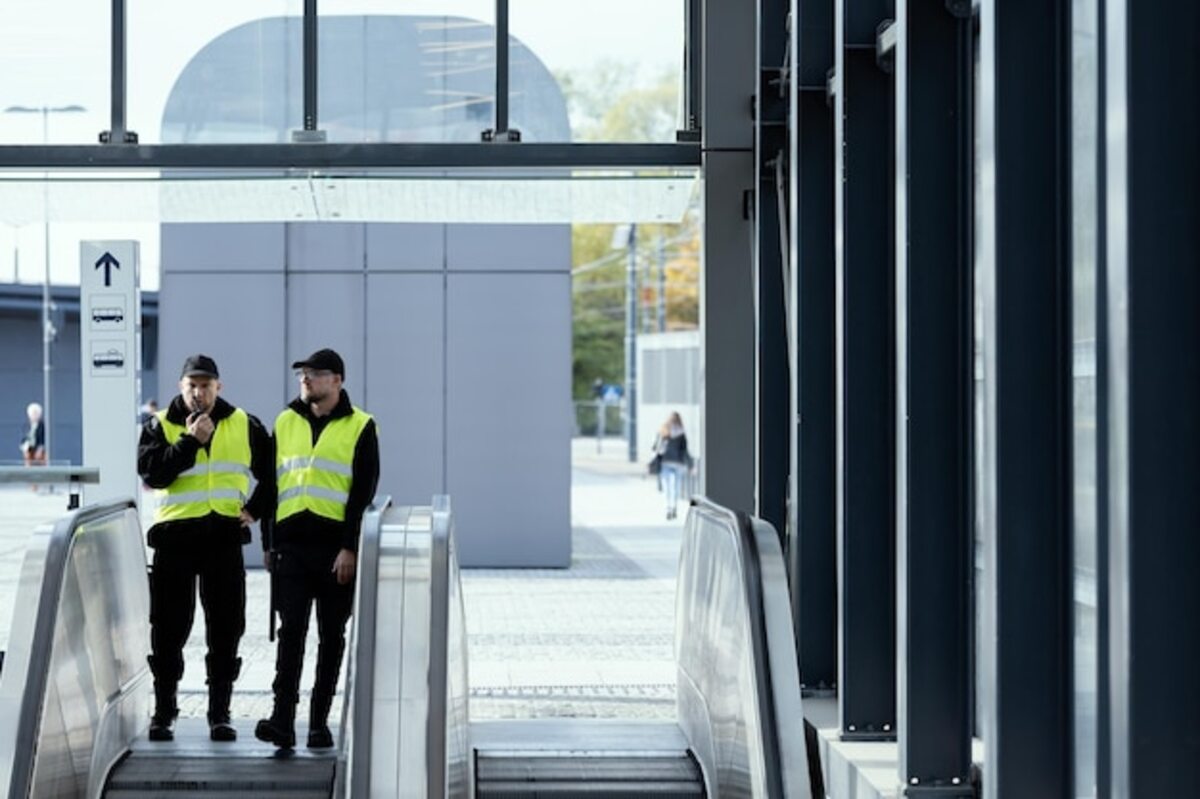How to evaluate the neighborhood's infrastructure in your rental.

Choosing an ideal place to live is not only about the house itself but also about the infrastructure of the surrounding neighborhood. In this article, you will discover how to evaluate key aspects such as access to public services, transportation, and safety to ensure that your rental is a smart decision. With this practical guide, you will enhance your search and find the perfect home that truly fits your needs and lifestyle. Let's explore together!
Importance of infrastructure in rental
The infrastructure of a neighborhood plays a fundamental role in the quality of life of its residents. It is not just about aesthetics or urban design, but about how these elements affect daily activities and overall well-being. A well-planned area with access to public services such as drinking water, electricity, and sanitation is crucial for ensuring harmonious coexistence. Additionally, having facilities like schools, hospitals, and shopping centers nearby can greatly facilitate daily life, saving time and effort in commuting.
Another essential aspect is the connectivity provided by public transportation. A neighborhood with good transportation options facilitates commutes to workplaces, leisure activities, and educational institutions, which can be decisive when choosing a rental. Safety is another key factor; living in a safe area not only provides peace of mind but also influences the long-term value of the property. Evaluating all these aspects will allow you to make informed decisions about your next home, ensuring that it meets your expectations and daily needs.
2. Access to public transportation: What to consider?
Access to public transport is a crucial aspect to consider when evaluating the infrastructure of a neighborhood for your rental. A good transport system not only facilitates daily commuting to work or school, but it can also enhance your quality of life by allowing you to explore broader areas of the city without fully relying on a private vehicle. When researching, check the proximity of subway stations, bus stops, and other transport options. Also consider the frequency and schedules of these services; greater regularity in the routes can save you valuable time on your journeys.
Another important factor is the connectivity of public transport with key points such as shopping areas, educational centers, and hospitals. Make sure that the available lines take you to the places you frequently visit. Additionally, research if there are future plans to expand or improve the transport system in that area, as this could influence rental value and your long-term comfort. Evaluating these details will allow you to make an informed decision about how the neighborhood fits your daily needs and lifestyle.
3. Basic services: water, electricity, and sanitation
The availability and quality of basic services such as water, electricity, and sanitation are fundamental to ensuring a comfortable and healthy lifestyle in any neighborhood. When evaluating a place to live, it is essential to check if the water supply is consistent and potable, as well as the efficiency of the sewage system. An environment with sanitation issues can pose health risks, so it's important to inquire about the status of these services before making a decision. Additionally, consider whether there are scheduled improvement or maintenance plans that may affect your experience.
Electricity also plays a crucial role in the neighborhood's infrastructure. Make sure that the power supply is stable and sufficient to meet your daily needs. Research whether there are frequent power outages or if the area has experienced issues related to electrical overloads. These aspects can influence not only your comfort but also your monthly expenses, as an inefficient installation could result in higher bills. In summary, when evaluating a rental, paying attention to these basic services will help you ensure a functional and pleasant home within the chosen neighborhood.
4. Neighborhood safety: how to assess the environment
Neighborhood safety is one of the most crucial aspects to consider when evaluating a place to live. To begin, research crime statistics in the area you are interested in. Many cities provide public reports on crimes, which will allow you to understand the level of safety compared to other areas. Additionally, observe if there is regular police presence and if neighbors are organized to maintain the area's security; these are positive indicators of a safe environment. Talking to current residents can also provide you with valuable insight into the overall sense of security in the neighborhood.
Another aspect to consider is public lighting and the quality of sidewalks and streets. A well-lit and maintained neighborhood is often a sign of a safe environment, as it deters criminal activities and promotes walkability. Also evaluate the proximity to services such as police stations, hospitals, or community centers, as their closeness can be a determining factor in the speed of response to any emergency. Finally, do not underestimate the power of local social networks; platforms like Nextdoor can provide you with updated information on recent incidents and safety alerts in your future neighborhood.
5. Proximity to educational and health centers
Proximity to educational and health centers is a fundamental aspect to consider when evaluating the infrastructure of a neighborhood. Living near schools, colleges, and universities not only facilitates access to quality education for you or your children, but it can also influence the long-term value of the property. Neighborhoods with good educational options tend to be more attractive to families, which can translate into a more stable and friendly environment. Additionally, having educational institutions nearby will allow you to take advantage of extracurricular activities and community events that enrich family life.
On the other hand, proximity to healthcare centers is equally crucial to ensure your well-being and that of your family. Having hospitals, clinics, or medical offices nearby means that you can receive timely medical attention in case of emergencies or regular check-ups. This is especially important if you have young children or elderly people at home, who may require more frequent medical attention. Additionally, living in an area where healthcare services are accessible can contribute to greater peace of mind, knowing that you are prepared for any health-related eventuality.
6. Recreational spaces and green areas available
When evaluating the infrastructure of a neighborhood, it is essential to consider the recreational spaces and green areas available. These elements not only enhance the quality of life by providing places for leisure and physical activity but also foster a sense of community among residents. The presence of parks, gardens, and sports areas can be particularly attractive to families with children, as they provide a safe and healthy environment where children can play and socialize. Furthermore, these spaces are ideal for outdoor activities such as walking, picnics, or simply enjoying a good book in contact with nature.
Green areas also contribute to improving the aesthetics of the neighborhood and have a positive impact on the emotional well-being of its inhabitants. Studies have shown that being surrounded by nature can reduce stress and increase overall happiness. Therefore, when visiting potential neighborhoods for your new home, do not forget to explore these recreational spaces; observe how they are maintained and whether they offer additional amenities such as walking trails or outdoor exercise areas. A neighborhood with good green spaces will not only provide you with a place to relax, but it can also enhance your daily experience at home.
7. Local amenities: nearby supermarkets and shops
When evaluating the infrastructure of a neighborhood, local amenities play a fundamental role in your quality of life. Having supermarkets and nearby shops not only makes your daily shopping easier but also saves you time and effort. It is important to research the variety of options available: from large chains to small local businesses. This will not only allow you to choose between different prices and qualities but can also enrich your experience by encouraging support for the local economy. Additionally, consider the opening hours and whether they offer additional services such as home delivery.
Another aspect to consider is the accessibility of these businesses. A good neighborhood should have supermarkets and stores that are conveniently located, preferably within walking distance or with easy access to public transportation. This not only reduces the need to rely on a car but also helps you develop more sustainable habits. Finally, do not underestimate the importance of knowing the opinions of neighbors about these stores; their experiences can provide you with valuable information about the quality of service and the products available in your future community.
8. Assessment of noise and pollution in the area
The assessment of noise and pollution in the area is a fundamental aspect when considering a rental. A quiet and clean environment not only affects your quality of life but can also influence your long-term health. Observe the noise levels at different times of the day; if you live near a main road or a shopping center, you are likely to experience constant noise that can interfere with your rest and well-being. Walk around the neighborhood at varied times to get a clear idea of how the environment feels, paying attention to disturbing noises such as traffic, construction, or nightlife activities.
In addition to noise, air pollution is another critical factor to assess. Proximity to industries or heavily trafficked areas can increase pollutant levels in the environment. Use apps or online resources to check the air quality in the area before making a final decision about your rental. Also, consider researching local initiatives to reduce pollution, such as nearby parks or sustainable transportation programs, as these actions can make a significant difference in the overall environment and contribute to a healthier lifestyle. Evaluating these aspects will allow you to choose a home where you can fully enjoy each moment without additional concerns related to the surroundings.
9. Future trends: urban development and its impact on your rent
Future trends in urban development are shaping the way we experience our living spaces and, therefore, have a significant impact on the rental market. As cities evolve, new infrastructure projects emerge, such as urban parks, cultural centers, and improvements in public transportation. These initiatives not only beautify the neighborhood but also increase its appeal to potential tenants. Therefore, when evaluating a rental, it is essential to consider not only the current state of the neighborhood but also its future development plans. An area with positive projections can offer a better quality of life and ensure a stronger investment.
Additionally, sustainability is becoming a key factor in contemporary urban development. Neighborhoods that prioritize eco-friendly and accessible practices will attract a growing environmentally conscious population. This includes the implementation of energy-efficient buildings and alternative transportation systems that reduce dependence on cars. Tenants are increasingly seeking these features when choosing their homes; so if you're interested in renting in an area with innovative and sustainable proposals, you'll be able to enjoy not only a pleasant place to live but also contribute to a more responsible and balanced future. In summary, understanding future trends in urban development can be decisive for your rental decision and long-term satisfaction.



